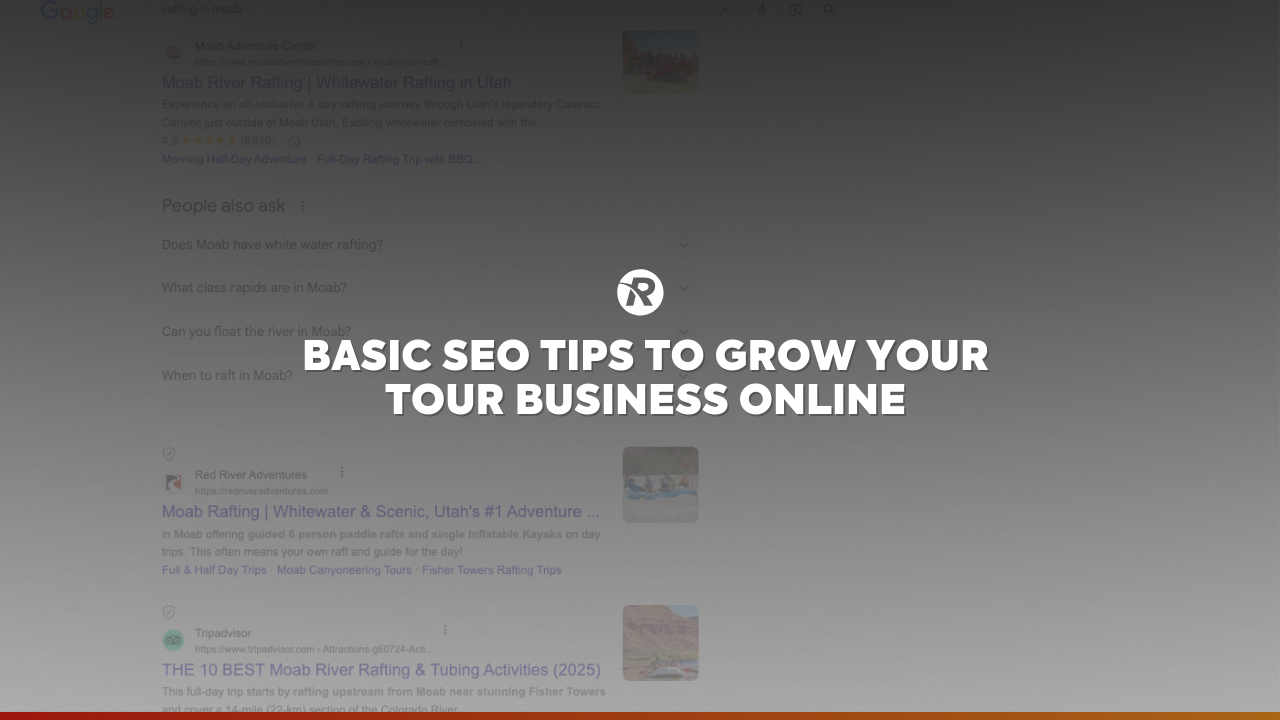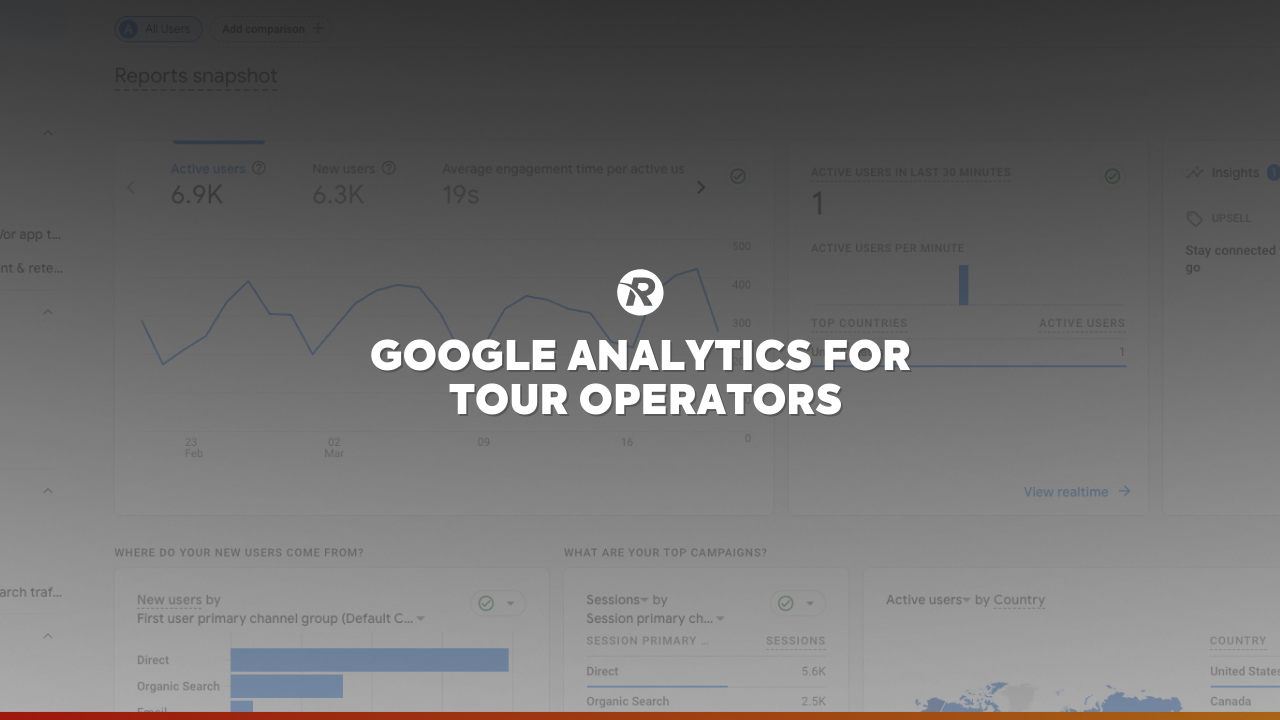How To Create a Travel Brochure That Inspires Adventure
Wait… are brochures still a thing?!
In a world where digital marketing dominates, it’s easy to assume traditional methods like brochures are a relic of the past. Sure, the internet is a force for inspiration and bookings, but there’s something uniquely powerful about holding a beautifully designed travel brochure in your hands.
Your customers crave both online convenience and offline connection. A physical brochure offers a tactile, visual experience that sparks imagination and bridges the gap between curiosity and action. Whether it’s flipping through vivid pages in a hotel lobby or discovering unexpected adventures in a visitor center, brochures still make a strong impact.
In this blog post, we’ll explore how to create a travel brochure that not only turns heads and drives bookings but also serves as a seamless complement to your digital strategy. We’ll discuss how to balance traditional charm with modern impact, connect with your audience across multiple channels, and craft a cohesive marketing approach that sparks curiosity and inspires travel.
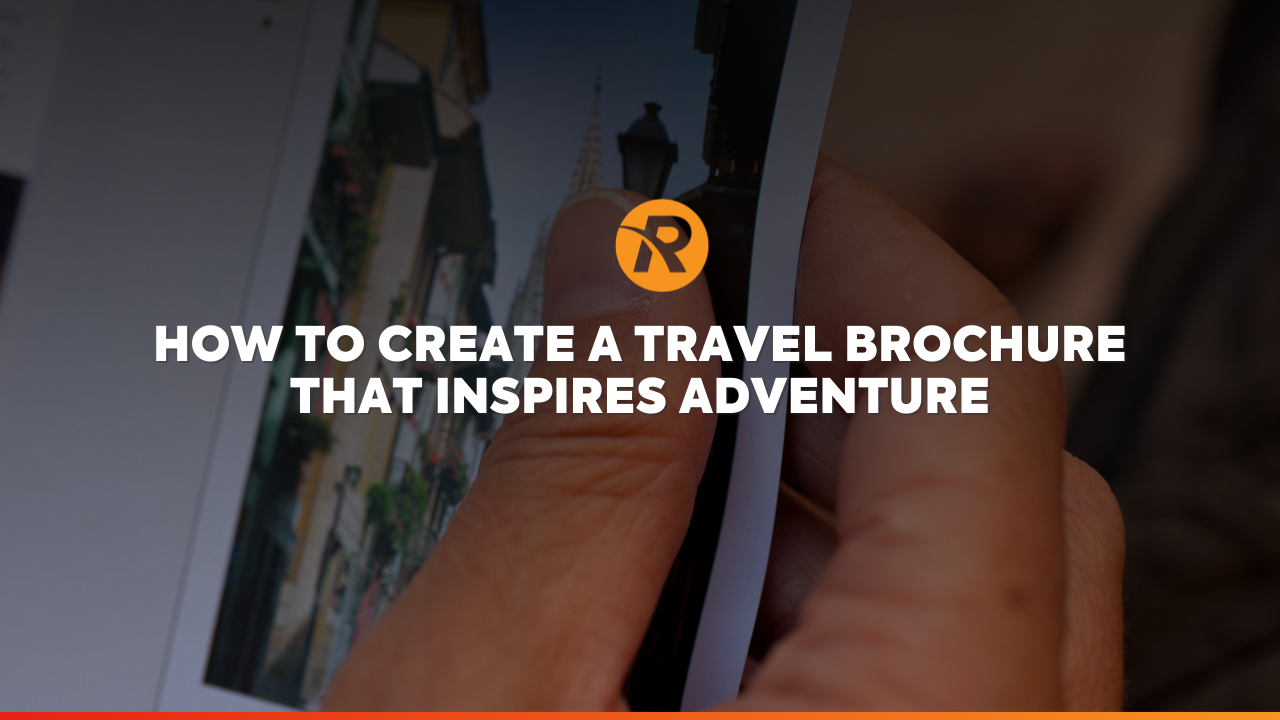
Why Travel Brochures Still Matter
Travel brochures offer something digital platforms can’t—a personal, hands-on connection to a destination. Unlike fleeting online ads or social media posts, brochures have a physical presence that lingers, inviting readers to engage at their own pace. Whether tucked into a bag or prominently displayed in a hotel lobby, they’re a reliable and accessible resource for travelers seeking inspiration or last-minute ideas.
Brochures also have the unique ability to spark discovery in unexpected moments. Picture your ideal customer flipping through a colorful rack of brochures while waiting in line or relaxing at a café—they might stumble upon an experience they hadn’t considered before. This element of serendipity is harder to replicate in a purely digital format.
Finally, brochures offer a sense of trust and professionalism. A polished, well-designed brochure signals that your business is established and reputable, leaving a positive impression long after the first glance. It’s this blend of inspiration, accessibility, and credibility that keeps travel brochures relevant in today’s marketing mix.
What Makes an Effective Travel Brochure?
An effective travel brochure isn’t just pretty; it’s purposeful. It should combine visual appeal with valuable information that encourages readers to take action. Let’s break it down with a white-water rafting example:
Eye-Catching Cover Design
Your cover is the first impression, so make it count. Use a striking image that captures the thrill of your rafting adventures, such as rafters navigating a roaring rapid in a picturesque canyon. Add your company name, logo, and a tagline that reflects the experience, like “Conquer the Rapids of the Colorado River.”
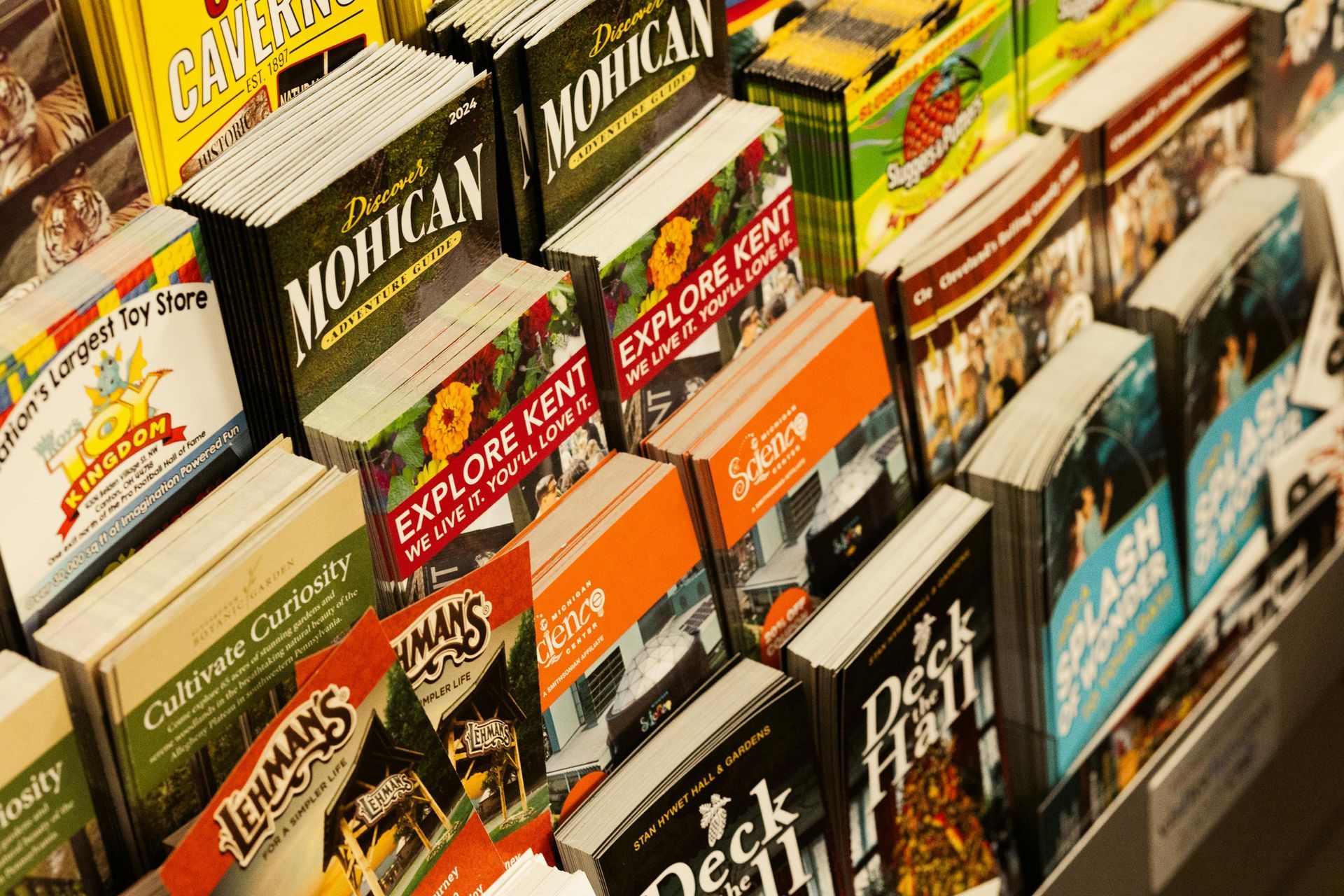
High-Quality Images
Photography is your most powerful tool. Use vibrant, high-resolution images that showcase the excitement of your tours—groups paddling through challenging rapids, calm moments surrounded by towering cliffs, or smiling adventurers celebrating their achievements. Authentic visuals of real customers enjoying your tours will make a stronger impact than generic stock photos.
Engaging Content
Your descriptions should paint a vivid picture. For example, instead of saying, “We offer a Class III rafting trip,” write:
“Experience the excitement of Class III rapids as you paddle through the breathtaking Glenwood Canyon, surrounded by towering sandstone cliffs and the rush of pristine waters. Perfect for first-timers and seasoned adventurers alike!”
Clear Call to Action (CTA)
Motivate your readers to take the next step with CTAs like:
- “Reserve your rafting adventure today at [website link].”
- “Call us now to plan your ultimate river experience: [phone number].”
- “Visit our tour office at [address] to book in person and learn more.”
Important Note: Make sure your phone numbers, website links, and CTAs are all tracked so you can measure the effectiveness of your brochures. Using unique phone numbers or tracking codes in your website URLs helps you pinpoint which brochures are driving the most interest and bookings. This tracking information provides valuable insights into your marketing strategy, helping you adjust efforts for better results.
Essential Details
Provide all the information your customers need to plan their trip:
- Meeting points and departure times
- What to bring (e.g., waterproof gear, sunscreen)
- Age or fitness requirements for participants
- Contact information and a map for easy navigation

Brand Consistency
Your brochure should reflect your brand identity. Use fonts, colors, and a tone of voice that align with your company’s personality. If your tours emphasize excitement and adventure, let that energy shine through in your design and text.
By combining stunning visuals, engaging content, and clear action steps, your travel brochure can inspire thrill-seekers to book their next white-water rafting adventure with you.
Steps to Create a Travel Brochure
Step 1: Define Your Goals
Decide what you want your brochure to achieve. Are you promoting a specific tour, providing a comprehensive destination guide, or encouraging website visits? Your goals will shape the content and design.
Step 2: Know Your Audience
Tailor your brochure to your target demographic. Are they families, solo travelers, or adventure enthusiasts? Use language and visuals that resonate with their preferences.
Step 3: Plan Your Content
Outline the sections of your brochure, such as:
- About your company
- Highlighted experiences or tours
- Local attractions
- Testimonials or reviews
- Booking information
Step 4: Design Your Brochure
Once you've gathered your content, it's time to bring your brochure to life with a visually appealing design. Tools like Canva or Adobe Express (formally Adobe Spark) can help you create a polished brochure using customizable templates. Below are some additional design tools that can streamline the process:
Adobe InDesign
- Best For: Professional-grade design
- Features: Adobe InDesign is the industry standard for print design, offering powerful layout and typography tools, precise control over graphics, and a variety of templates. It’s ideal for high-quality, print-ready brochures.
- Why Use It: If you’re looking for full creative control and a polished, professional look, InDesign is the perfect choice. It also supports advanced features like multi-page layouts and seamless integration with other Adobe tools such as Photoshop and Illustrator.
Microsoft Publisher
- Best For: Beginner to intermediate designers
- Features: Microsoft Publisher is an easy-to-use tool with a variety of templates, basic image editing, and straightforward text formatting options.
- Why Use It: Publisher is perfect for those who need a simple design tool with a minimal learning curve. It’s an excellent option for businesses without a dedicated graphic designer.
Marq (formally Lucidpress)
- Best For: Collaborative design
- Features: Lucidpress is a web-based platform that offers drag-and-drop design tools, customizable templates, and collaborative features, making it great for teams working together remotely. It’s easy to use on any device.
- Why Use It: If your team needs to collaborate on a design, Lucidpress offers a user-friendly solution. It provides professional-quality templates while streamlining the design process for multiple contributors.
Vistaprint
- Best For: Custom print design and printing
- Features: Vistaprint allows you to design your brochure and order high-quality prints directly from their platform. It offers a range of templates tailored for brochures.
- Why Use It: Vistaprint is a great option if you want a seamless process from design to printing, especially if you’re ordering a large print run. The platform ensures the final product looks professional.
Design Tip: Make sure your layout is clean, visually appealing, and easy to navigate. Use headers, bullet points, and spacing effectively to guide readers. This will help ensure that your brochure is not only attractive but also functional, making it easy for potential customers to absorb the key information and take action.
Step 5: Distribute Your Brochure
Once your brochure is ready, it’s time to get it into the hands of potential customers. Printed brochures are highly effective in tourist-heavy areas such as hotel lobbies, visitor centers, or local shops where travelers are already planning their next adventure. To get your brochure printed:
- Choose a Print Provider: Find a reputable print shop or online printing service that specializes in high-quality, durable brochures. Look for options that offer a range of paper finishes (e.g., matte, glossy) to suit the feel of your brand.
- Consider Volume and Quality: Depending on your distribution plan, order enough brochures to cover your target audience. Higher print runs typically reduce the cost per brochure, but you don’t want to overstock. Make sure to choose a high-quality paper stock that will feel substantial in customers' hands, leaving a lasting impression.
- Proof and Approve: Always ask for a proof before the full print run begins. This ensures the colors, fonts, and images look exactly as intended and helps avoid costly mistakes.
- Distribute Strategically: As we mentioned, place brochures in high-traffic areas where your target audience is likely to be, like travel agencies, adventure gear shops, local tour operators, or at popular rafting destinations. Consider working with local businesses to distribute brochures as part of a joint marketing effort.
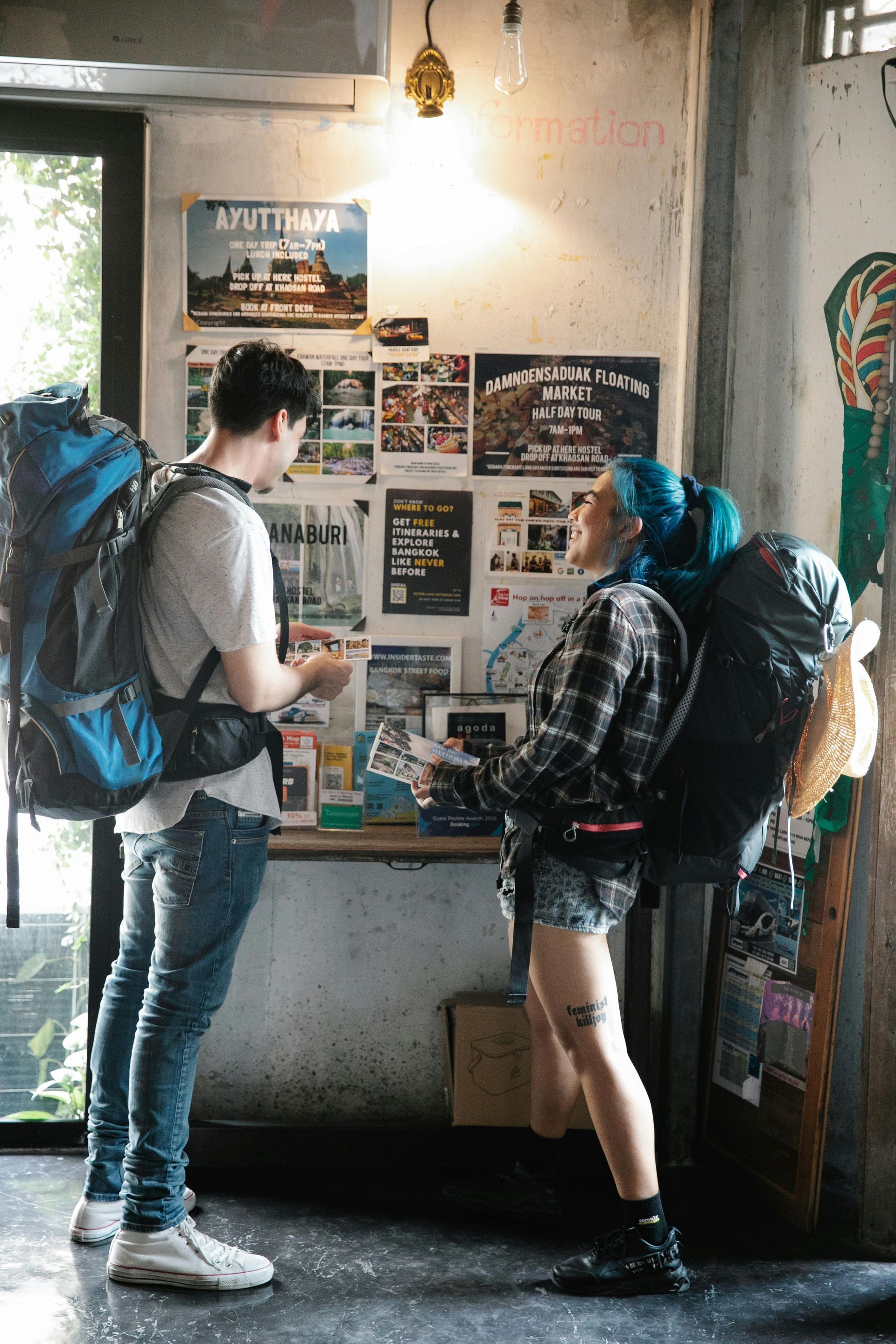
Pro Tips for Crafting a Compelling Travel Brochure
- Focus on Benefits, Not Just Features: Highlight what makes your destination special. Instead of listing amenities, emphasize experiences, such as “Relax in a tranquil spa surrounded by tropical gardens.”
- Incorporate Local Insights: Showcase unique aspects of your destination that travelers won’t find elsewhere. This could be a hidden hiking trail, a local restaurant, or cultural events.
- Include Testimonials or Reviews: Social proof builds trust. Feature a few short, compelling quotes from satisfied customers.
- Use QR Codes: Add QR codes to link readers directly to your website, booking page, or a virtual tour. This bridges the gap between offline and online experiences.
The Future of Travel Brochures
Digital innovations have transformed the traditional travel brochure into a versatile marketing tool. By embracing both physical and digital formats, you can cater to a broader audience and maximize your reach.
While your website serves as a 24/7 resource, a brochure can leave a lasting impression, especially for in-destination travelers seeking immediate guidance.
Take Your Travel Marketing to the Next Level
Creating a travel brochure that inspires adventure is about blending the timeless appeal of print with the power of digital marketing. While digital platforms dominate the travel industry, a well-crafted brochure remains a powerful tool to connect with your audience on a personal level.
By focusing on captivating visuals, engaging content, and clear calls to action, you can craft a brochure that sparks curiosity and drives bookings—while seamlessly integrating with your online strategy. Whether it’s linking to your website through a QR code or promoting exclusive offers on social media, your brochure can complement your digital presence and amplify your reach.
Ultimately, the combination of print and digital marketing creates a cohesive, multi-channel approach that leaves a lasting impression, inspiring travelers to explore and book their next adventure with you.
If you’re ready to take your marketing to the next level with ResmarkWeb,
schedule a call today!

